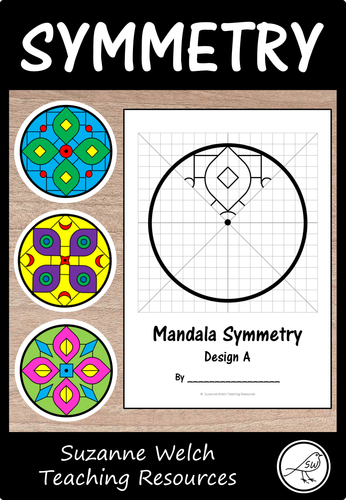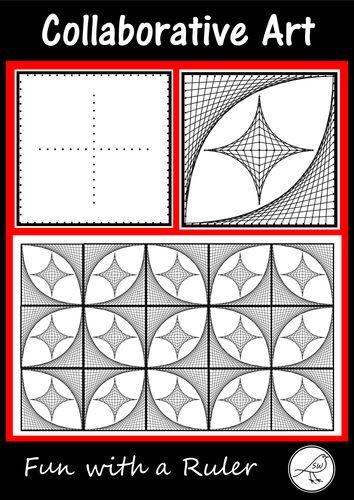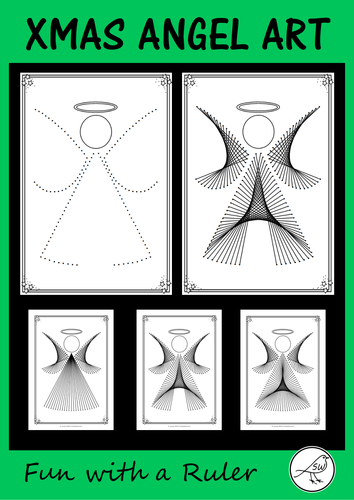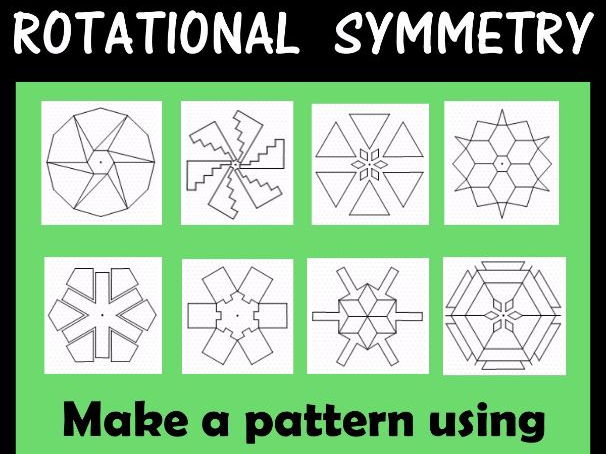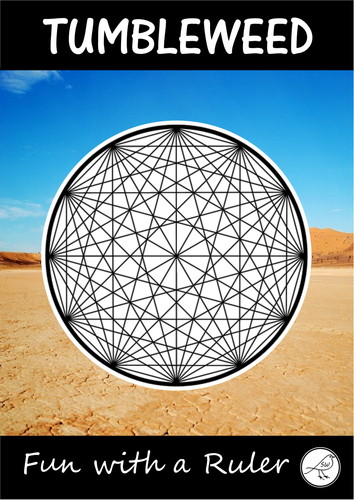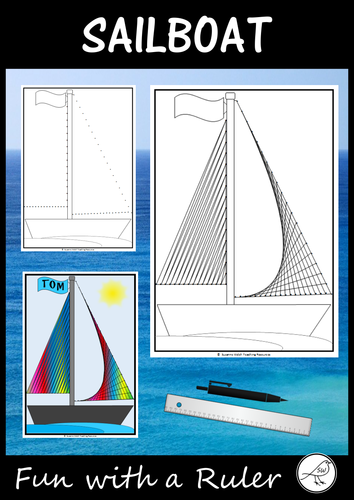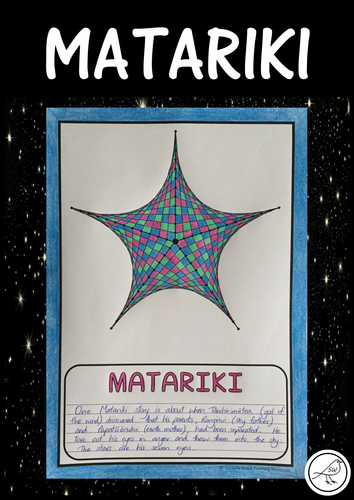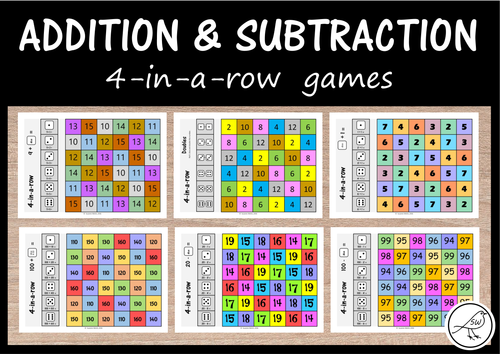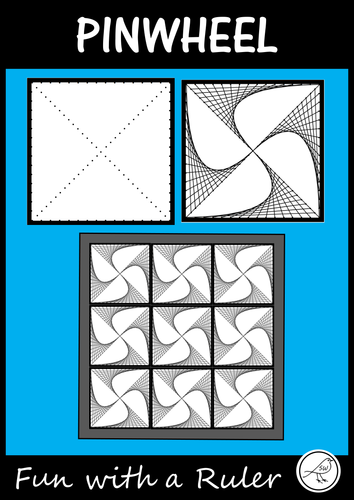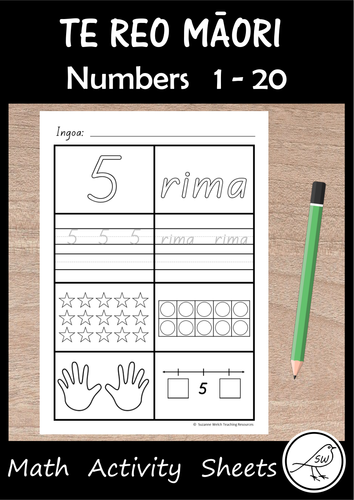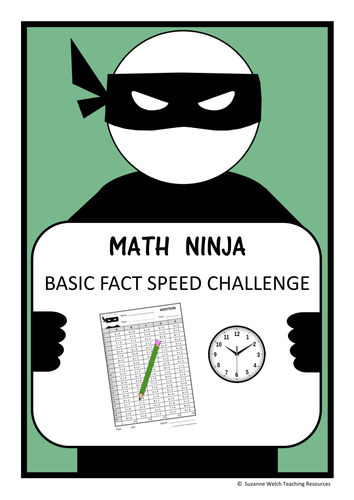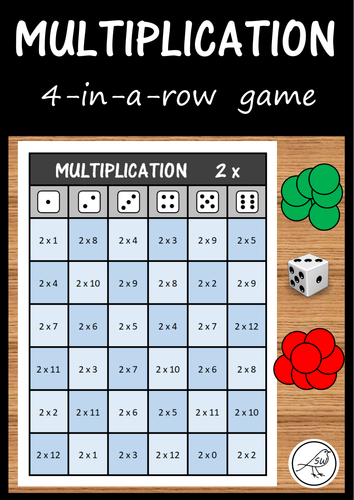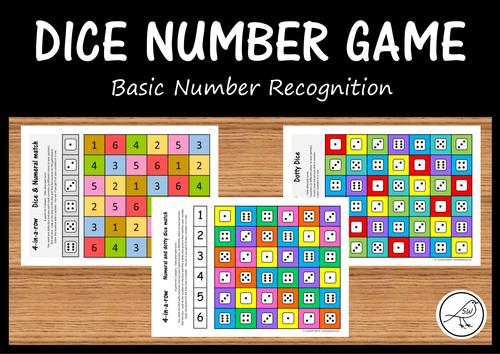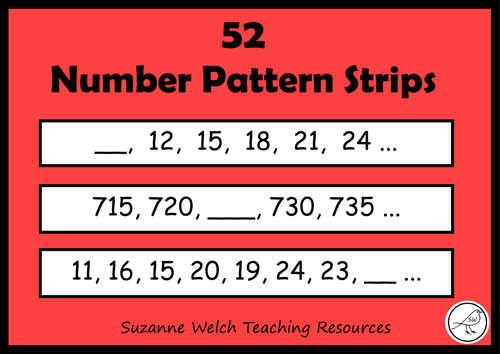
377Uploads
168k+Views
10k+Downloads
Maths for early years

Math Art – Rotational Symmetry – Mandala Patterns
A fun activity for your students when studying geometry or cultural celebrations such as Diwali (The Festival of Lights).
Students use the grid lines and lines of symmetry to help them draw the pattern in the other sections of the circle. The lines are light grey and they will become less visible after colouring.
Included:
♦ 3 different patterns
♦ Blank template (students can make up their own pattern)
For each of the 3 patterns:
♦ student template with grid lines.
♦ completed student template (great as a reference during the lesson).
♦ the pattern without the grid lines (could be used as a simple colouring activity if desired).
An example of what is included for each of the 3 patterns is included in the images.
Provided in 2 different paper sizes:
♦ A4 size paper
♦ Letter size paper
Make ... colour ... cut ... display
The blank template includes: grid lines, lines of symmetry, outer circle.
© Suzanne Welch Teaching Resources

Fun with a Ruler - Collaborative Art Project using Parabolic Curves
A ‘Fun with a Ruler’ art project that involves drawing parabolic curves (curves that are made by drawing a series of straight lines).
This project involves your students ruling straight lines between 2 dots on a template. When they have finished drawing all of the lines they can give their artwork some colour.
Each student completes a square. Join the squares together to make an eye-catching display (see image for example).
Included:
♦ Template – black dots
♦ Template – light grey dots
♦ Example
♦ Display suggestion
♦ Instructions
♦ Teacher notes
Level of Difficulty:
Your students need to be able to use a ruler to draw straight lines between 2 points (the curves are made with straight lines … it’s like magic!). The designs can look more complicated than they actually are. Concentration is required, but the actual process is not difficult.
Instructions:
Simple, clear, easy-to-follow instructions are provided. One instruction per page (image and a sentence). Display the instructions via a data projector if you have access to one. Otherwise print and enlarge them and/or demonstrate on an enlarged template.
Equipment:
You need a ruler and a pen (black works best). Something to colour with (eg coloured pencils, watercolours, felt tip markers, chalk pastels, dye, etc)
Size:
Each square measures approximately 18.5cm x 18.5cm. Designed on A4 size paper.
Keywords: string art, math, geometry, patterns, parabolic curves.
© Suzanne Welch Teaching Resources

Strategy Board Games for Critical Thinking
This is a set of 10 board games that work on STRATEGY rather than CHANCE.
The only equipment you need is counters/markers.
Provided in both colour and black/white.
Easy-to-follow instructions are written on the game boards.
All games are for 2 players.
These games develop skills such as:
♦ strategic thinking
♦ logical thinking
♦ spatial perception
♦ planning ahead
♦ social interaction (not played on a screen!)
Games:
♦ Spiralin’
♦ Slide it!
♦ Sandwich
♦ Choices
♦ Pretwa
♦ Block
♦ Len Choa
♦ Nine Holes
♦ Tapatan
♦ Nine Field Kono
Designed on A4 size paper.
**********************************************************************
© Suzanne Welch Teaching Resources

Christmas Art - Angels
A ‘Fun with a Ruler’ art project for your students to complete during the Christmas season. There are 3 different templates to create 3 slightly different angels.
This project involves your students ruling straight lines between 2 dots on a template. When they have finished drawing all of the lines they can give the head some detail (hair, eyes, mouth, etc) and give their artwork some colour.
Included:
♦ 3x templates – black dots
♦ 3x examples – black/white
♦ 3 x instructions
♦ Teacher notes
Level of Difficulty:
Your students need to be able to use a ruler to draw straight lines between 2 points (the curves are made with straight lines … it’s like magic!). The designs can look more complicated than they actually are. Concentration is required, but the actual process is not difficult.
Instructions:
Simple, clear, easy-to-follow instructions are provided. One instruction per page (image and a sentence). Display the instructions via a data projector if you have access to one. Otherwise print and enlarge them and/or demonstrate on an enlarged template.
Equipment:
You need a ruler and a pen (black works best). Something to colour with (eg coloured pencils, watercolours, felt tip markers, chalk pastels, dye, etc)
Keywords: parabolic curves, math, geometry, patterns, string art, Xmas
© Suzanne Welch Teaching Resources

Poppy Art – Remembrance Day, Memorial Day, Armistice Day, Anzac Day.
A ‘Fun with a Ruler’ art project for your students to complete leading up to Remembrance Day / Memorial Day / Armistice Day / Anzac Day.
This project involves your students ruling straight lines between 2 dots on a template, to create a poppy. Your students could write something in the petals before colouring (eg facts, opinons, a 4 line poem, etc). Display them together to make a 'poppy patchwork quilt'.
Included:
♦ Template – black dots
♦ Template – light grey dots
♦ Example – black/white
♦ Instructions
♦ Teacher notes
Level of Difficulty:
Your students need to be able to use a ruler to draw straight lines between 2 points (the curves are made with straight lines … it’s like magic!). The design looks more complicated than it actually is. Concentration is required, but the actual process is not difficult. A pattern is repeated 8 times.
Instructions:
Simple, clear, easy-to-follow instructions are provided. One instruction per page (image and a sentence). Display the instructions via a data projector if you have access to one. Otherwise print and enlarge them and/or demonstrate on an enlarged template.
Equipment:
You need a ruler and a pen (black works best). Something to colour with (eg coloured pencils, watercolours, felt tip markers, chalk pastels, dye, etc)
Size:
The artwork measures approximately 17cm x 17cm. Designed on A4 size paper.
Keywords: string art, parabolic curves, math, geometry, patterns, war, symbolism, veteran,
© Suzanne Welch Teaching Resources

Rotational Symmetry – Art activity – Maths (Geometry)
Rotational Symmetry Art Activity.
This fun activity produces fantastic designs that your students will be super proud of.
Each template has rotational symmetry of order 6 and is on isometric dot paper. Your students simply add more lines (ensuring each line is done 6 times to keep it symmetrical), using the dots to maintain accuracy. When your students are happy with their final design they can colour it in using symmetrical colouring.
Afterwards, your students may wish to cut their design out and use it in another piece of artwork. For example, adding a stem and leaves to turn it into a flower.
Plain isometric dot paper has also been provided as a basis for your students to create their own rotational symmetry design from scratch.
Provided as two separate files – A4 paper size and Letter paper size.
What you get:
• 30 templates on isometric dot paper
• Poster explaining rotational symmetry
• Isometric dot paper (plain)
• Teacher notes
© Suzanne Welch Teaching Resources

Math Art - Fun with a Ruler - Tumbleweed
A ‘Fun with a Ruler’ math/art project for your students. This project involves your students ruling straight lines between 2 dots on a template. When they have finished drawing all of the lines they can give their artwork some colour.
Included:
♦ Template
♦ Example
♦ Instructions
♦ Teacher notes
Level of Difficulty:
Your students need to be able to use a ruler to draw straight lines between 2 points. The design can look more complicated than it actually is. Concentration is required, but the actual process is not difficult.
Instructions:
Simple, clear, easy-to-follow instructions are provided. One instruction per page (image and a sentence). Display the instructions via a data projector if you have access to one. Otherwise print and enlarge them and/or demonstrate on an enlarged template.
Equipment:
You need a ruler and a pen (black works best). Something to colour with (eg coloured pencils, watercolours, felt tip markers, chalk pastels, dye, etc)
Size:
The circle is approximately18cm in diameter. Designed on A4 size paper.
Keywords: string art, math, geometry, patterns, lines, ruler.
© Suzanne Welch Teaching Resources

Math Art - Fun with a Ruler - Sailboat
A ‘Fun with a Ruler’ math/art project for your students. This project involves your students ruling straight lines between 2 dots on a template. One set of lines makes a parabolic curve and the other set makes a zig-zag pattern. When they have finished drawing all of the lines they can give their artwork some colour.
Included:
♦ Template
♦ Example – black/white
♦ Example - coloured
♦ Instructions
♦ Teacher notes
Level of Difficulty:
Your students need to be able to use a ruler to draw straight lines between 2 points (the curves are made with straight lines … it’s like magic!). The designs can look more complicated than they actually are. Concentration is required, but the actual process is not difficult.
Instructions:
Simple, clear, easy-to-follow instructions are provided. One instruction per page (image and a sentence). Display the instructions via a data projector if you have access to one. Otherwise print and enlarge them and/or demonstrate on an enlarged template.
Equipment:
You need a ruler and a pen (black works best). Something to colour with (eg coloured pencils, watercolours, felt tip markers, chalk pastels, dye, etc)
Designed on A4 size paper.
Keywords: string art, math, geometry, patterns, parabolic curves, water, ocean, wind, sport
© Suzanne Welch Teaching Resources

Matariki - Math Art - Parabolic Curve Stars
Celebrate the Māori New Year with this activity that includes a math focus (parabolic curves).
Parabolic Curves – draw a series of straight intersecting lines between dots on the template and watch curves magically appear! Super-fun and engaging.
4 DIFFERENT TYPES OF STARS:
♦ 4-point
♦ 5-point
♦ 6-point
♦ 8-point
4 ACTIVITY OPTIONS:
♦ Create the star and write a fact about Matariki in the box underneath.
♦ Create the star on the circle template, cut it out and glue on a coloured piece of paper/card. Type or write a fact about Matariki and glue it underneath.
♦ Create the star on the circle template. Cut it out and glue it onto some card. Write a fact about Matariki on the back and hang it.
♦ Use the example stars as a colouring activity only. Display any way you wish.
INCLUDED:
♦ Instructions.
♦ 4, 5, 6, 8 star templates with box to write in underneath
♦ 4, 5, 6, 8 star templates in circle
♦ 4, 5, 6, 8 star templates in circle with lines already drawn
INSTRUCTIONS:
Easy-to-follow instructions are included. One instruction is written and shown on an A4 size page so they are great to show via a data projector if you have one. The pattern is very simple (eg. join dot 1-1, 2-2, 3-3, etc).
A black ball-point pen and coloured pencils are recommended for completing this activity.
Please note that some of the templates included in this resource are also found in one of my other resources:
STAR ART – using parabolic curves.
**********************************************************************
© Suzanne Welch Teaching Resources

Repeating Patterns – cards, strips and activities.
The ultimate resource to help you teach REPEATING COLOUR PATTERNS.
10 Different Pattern Sequences:
AB
ABC
AAB
ABB
ABCD
AABC
ABCC
AAAB
AABB
ABBC
Included:
♦ 10 pattern cards – provided in 4 different formats.
♦ 30 pattern strips – copy the pattern.
♦ 30 pattern strips – continue the pattern.
♦ 30 pattern strips – identify the missing cube(s).
♦ 24 Clip and flip cards.
♦ 24 Pattern hunt cards.
♦ 6 Worksheets.
♦ 4 Blank templates.
All of the patterns are shown with linking cubes (unifix, unlink, connecting cubes). The only colours you need for copying the pattern, continuing the pattern, and identifying the missing cube(s) are: red, blue, green, yellow. If you don’t have cubes you can use an alternative such as coloured counters, counting bears, etc.

Addition and Subtraction Math Games
Addition & Subtraction Dice Games for Maths.
4-in-a-row Gameboards
♦ 14 Different Gameboards.
♦ Equipment needed – dice, counters, gameboard
♦ Suitable for 2 players
♦ All games are provided in both colour and black and white.
How to Play:
1. Player A rolls the dice.
2. Player A looks at the dice picture on the left side of the board and works out the required sum.
3. Player A finds the answer to the sum on the gameboard and covers one of those squares with his/her counter.
4. Player B has their turn.
5. Players continue to take turns. The winner is the first player to get 4 of their counters in a row.
The Gameboards:
♦ dice + 1
1+1, 2+1, 3+1, 4+1, 5+1, 6+1
♦ 5 + dice
5+1, 5+2, 5+3, 5+4, 5+5, 5+6
♦ 10 + dice
10+1, 10+2, 10+3, 10+4, 10+5, 10+6
♦ 10 – dice
10-1, 10-2, 10-3, 10-4, 10-5, 10-6
♦ 20 + dice
20+1, 20+2, 20+3, 20+4, 20+5, 20+6
♦ 20 – dice
20-1, 20-2, 20-3, 20-4, 20-5, 20-6
♦ 100 + dice
100+1, 100+2, 100+3, 100+4, 100+5, 100+6
♦ 100 – dice
100-1, 100-2, 100-3, 100-4, 100-5, 100-6
♦ 100 + (dice x 10)
100+10, 100+20, 100+30, 100+40, 100+50, 100+60
♦ 100 – (dice x 10)
100-10, 100-20, 100-30, 100-40, 100-50, 100-60
♦ Doubles
1+1, 2+2, 3+3, 4+4, 5+5, 6+6
♦ 9 + dice
9+1, 9+2, 9+3, 9+4, 9+5, 9+6
♦ 19 + dice
19+1, 19+2, 19+3, 19+4, 19+5, 19+6
♦ 99 + dice
99+1, 99+2, 99+3, 99+4, 99+5, 99+6
© Suzanne Welch Teaching Resources

Math Art – Parabolic Curves - Pinwheel
A ‘Fun with a Ruler’ math/art project that uses parabolic curves to make an interesting ‘pinwheel’ design.
This project involves your students ruling straight lines between 2 dots on a template. When they have finished drawing all of the lines they can give their artwork some colour.
Included:
♦ Template (black or grey dots)
♦ Example
♦ Instructions
♦ Teacher Notes
There are 2 different templates to choose from. One of them is more suitable for older students as more care needs to be taken in ‘congested’ areas of the design. The designs are the same (one just has more dots/lines).
Level of Difficulty:
Your students need to be able to use a ruler to draw straight lines between 2 points (the curves are made with straight lines … it’s like magic!). The designs can look more complicated than they actually are. Concentration is required, but the actual process is not difficult.
Instructions:
Simple, clear, easy-to-follow instructions are provided. One instruction per page (image and a sentence). Display the instructions via a data projector if you have access to one. Otherwise print and enlarge them and/or demonstrate on an enlarged template.
Equipment:
You need a ruler and a pen (black works best). Something to colour with (eg coloured pencils, watercolours, felt tip markers, chalk pastels, dye, etc)
Size:
The design is 17.5cm x 17.5cm. Designed on A4 size paper.
Keywords: string art, math, geometry, patterns, parabolic curves
© Suzanne Welch Teaching Resources

Te Reo Māori – Math Activity Sheets – Numbers 1-20
A set of number activity sheets for use during math lessons when working on numbers 1-20.
The worksheets for numbers 1-10 are slightly different from the worksheets for numbers 11-20.
Worksheets 1-10
♦ Write your name.
♦ Colour the numeral.
♦ Colour the word.
♦ Trace the numeral; write the numeral independently.
♦ Trace the word; write the word independently.
♦ Show a group by circling and colouring the stars.
♦ Show the number on the tens frame (colour the circles).
♦ Colour the correct number of fingers.
♦ Write the number that comes before / after.
Worksheets 11-20
♦ Write your name.
♦ Colour the numeral.
♦ Colour the words.
♦ Trace the numerals and words.
♦ Write the numerals and words independently.
♦ Show a group by circling and colouring the stars.
♦ Show the number on the tens frames (colour the circles).
♦ Fill in the 6 missing numbers on the number line.
**********************************************************************
© Suzanne Welch Teaching Resources

Math Basic Facts - 'Math Ninja' Challenge
A basic fact speed and accuracy challenge.
5 different levels. 100 questions per level. Complete it in the time allocation with 100% accuracy to pass the level.
Five Levels:
1) Addition – using single digit numbers
2) Subtraction – facts to 20
3) Multiplication – 0x0 to 12x12
4) Division – same facts as multiplication
5) Mixture – mixture of levels 1 – 4
Suggested Use:
Students are given a certain allocation of time to achieve the completion of 100 facts with 100% accuracy. If they do this, they pass that level and move on to the next level. I would operate this challenge once a week, but it’s up to you. You select the time, depending on the ability of your students. Answer sheets are provided for self or buddy marking. Hand out certificates to recognise achievement.
Included:
♦ Question sheets (one for each level)
♦ Answer sheets
♦ Student recording sheets
♦ Teacher tracking sheet
♦ Certificates (colour and black/white)
♦ Wall display templates
**********************************************************************
© Suzanne Welch Teaching Resources

Multiplication Game - 4 in a row
A great game to reinforce multiplication facts (x1 to x12)
A game for 2 players.
Equipment needed: one dice, counters.
How to play:
Players take alternate turns. Player A rolls one dice and looks down the column that is the same number as the dice. He/She selects a question and answers it out loud. Player B checks that the answer is correct. Player A places a counter on that square. The first player to get 4 counters in a row is the winner. The row may be horizontal, vertical or diagonal.
The instructions are written at the base of each game board.
Game Boards:
x 1
x 2
x 3
x 4
x 5
x 6
x 7
x 8
x 9
x 10
x 11
x 12
mixture of x2 x5 x10
The facts on each board range from x0 to x12.
Choice of colour:
♦ 2 tone coloured boards
♦ single coloured boards
♦ black and white boards
Made on A4 sized paper.
**********************************************************************
© Suzanne Welch Teaching Resources

Number Identification 1-100 - 'Park the Car' activity
This is a great hands-on activity for students (particularly boys) to practise their number identification to 100. Students ‘drive’ their toy car and park it in the correct space.
Activity examples:
♦ Park your car on number ____.
♦ Park your car on a number that is one more than ____.
♦ Park your car on a number that is one less than ___.
♦ Park your car on a number that is bigger/smaller than ____.
♦ Park your car on an odd/even number.
♦ Park your car on a number that is between ____ and _____.
♦ Park your car on the answer to this question ______ . (eg 5+2)
33 different car park templates are provided.
Types of car parks include:
♦ numbers 0-9
♦ numbers 1-10
♦ numbers 11-20
♦ odd and even numbers 1-20
♦ decade numbers (10-19, 20-29, 30-39, etc)
♦ -teen and -ty numbers (eg 17 and 70)
♦ tens (10, 20, 30, 40, etc)
♦ mixture of numbers between 1-50
♦ mixture of numbers between 50-99
♦ mixture of numbers between 1-99
♦ double digits (eg 22, 33, 44, 55, etc)
♦ words (one – ten and eleven – twenty)
♦ count the dots (1-10)
♦ ten frames (1-10)
♦ tally marks (1-10)
A car park for ‘hundreds’ is also included (100, 200, 300, 400 etc).
* The font used is ‘NZ Basic Script’.
* Car parks are provided in both grey and white (see images in PREVIEW).
* Blank Templates are provided for you to make up your own number car parks.
* You will need to provide your own toy cars, however there are some included that you can print, cut and laminate if necessary.
* More than one car park can be lined up to provide an extra challenge for your students.
**********************************************************************
© Suzanne Welch Teaching Resources

Math - Ten Frame Train
A ten frame train that is suitable for using in your math lessons or having as a display on your classroom wall.
Included:
♦ Train engine
♦ Carriages - ten frames 0-10
♦ Carriages - ten frames 0-10 with numeral written at the top
1 engine/carriage per page.
**********************************************************************
© Suzanne Welch Teaching Resources

Dice Number Games - Basic number recognition
Basic Number Recognition - using a dice (1-6)
4-in-a-row Gameboards
♦ Game 1 – recognising dotty patterns on a dice.
♦ Game 2 – matching a dotty dice picture with a numeral.
♦ Game 3 – matching a numeral with a picture of a dotty dice.
Game 1 – Dotty Dice:
A game for 2 players. Take alternate turns. You need one dotty dice and you each need counters (a different colour to your partner). Roll the dice. Find it on the gameboard and cover the picture with a counter. You win if you get 4 of your counters in a row.
Game 2 – Dice and Numeral Match:
A game for 2 players. Take alternate turns. You need one dotty dice and you each need counters (a different colour to your partner). Roll the dice. Look at the dots on the dice and find the numeral on the gameboard. Cover the numeral with a counter. You win if you get 4 of your counters in a row.
Game 3 – Numeral and Dotty Dice Match:
A game for 2 players. Take alternate turns. You need one dice with numerals and you each need counters (a different colour to your partner). Roll the dice. Look at the number on the dice and find a dotty dice picture that matches your number. Cover the picture of the dice with a counter. You win if you get 4 of your counters in a row.
All 3 games are provided in both colour and black and white.

Number of the Day cards (scrappy border)
Number of the Day – Cards
Strengthen your student’s number knowledge with these task cards. 57 different questions that are applied to your number of the day. Simply pick and choose the cards that are appropriate for your learners.
Included:
♦ 57 cards (3 per page)
♦ Template to make additional cards
♦ Teacher notes
♦ Example answers (using number of the day: 538)
♦ Number of the day worksheet
Suggested Use:
♦ a warm up activity for a maths lesson.
♦ a math centre activity.
♦ an early finisher activity.
♦ an activity while waiting for ‘teacher time’.
♦ a lesson with a focus on number knowledge.
This resource is also available with a different style border - circles (in my store).
© Suzanne Welch Teaching Resources

Math Pattern Strips (Algebra) - Numbers
A comprehensive pack of number pattern strips. Everything you need for a differentiated math lesson.
Numbers under 100
20 x Strips to identify the pattern and continue it.
20 x Strips to find the missing number.
Pattern reference (teacher guide)
Student recording sheet and teacher answer sheet (for the ‘find the missing number’ strips)
Numbers over 100
20 x Strips to identify the pattern and continue it.
20 x Strips to find the missing number.
Pattern reference (teacher guide)
Student recording sheet and teacher answer sheet (for the ‘find the missing number’ strips)
More challenging
12 x Strips to identify the pattern and continue it.
12 x Strips to find the missing number.
Pattern reference (teacher guide)
Student recording sheet and teacher answer sheet (for the ‘find the missing number’ strips)
All pattern strips contain increasing and decreasing number patterns.
The sets of number pattern strips are provided in 2 different formats. Simply print the format you want to use. For example:
• 22, 24, 26, 28, 30, 32, 34 …
• 22, 24, 26, 28, __, 32, 34 …
There are 104 number strips in total. There are 52 different number pattern sequences.
The ‘more challenging’ strips have number patterns such as:
90, 80, 81, 71, 72, 62, 63, 53 … (subtract 10 then add 1)
© Suzanne Welch Teaching Resources

